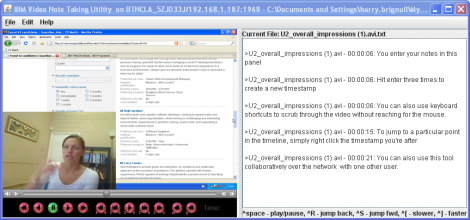Scott Bellini is an assistant professor in the area of School Psychology in the Counseling and Educational Psychology department at Indiana University. His work focuses on social skills development with children and teens who have autism spectrum disorders. He is known for his research in the area of video modeling. He is also the author of the book, Building Social Relationships: A Systematic Approach to Teaching Social Interaction Skills to Children and Adolescents with Autism Spectrum Disorders and Other Social Difficulties.
Dr. Bellini is involved with the Indiana Institute on Disabilities, which sponsors the Autism Resources website.
It is worth taking the time to explore the Autism Resources website/blog. There you will find a descriptions of resources for children, teens, parents, and teachers. The resources include books, videos, websites, and related events. Some of the links are to education-related websites that also include information related to autism spectrum disorders, such as links to fairly recent article on the Edutopia website by Fran Smith that highlights the problem facing public schools schools in dealing with the increase in the number of students with autism spectrum disorders.
Tom Buggy is the Siskin Chair of Excellence in Early Childhood Education at UT-Chattanooga. Like Scott Bellini, he also focuses on video self-modeling with young people who have autism spectrum disorders. Dr. Buggy is the author of "Seeing is Believing: Video Self-Modeling for People with Autism and Other Developmental Disabilties", authored by Tom Buggey.
According to the description of the book, "VSM involves filming and editing footage to create a video of a person's ideal performance of a skill. The person then can watch whenever they please and gather valuable information about the skill. Seeing is Believing offers and step by step guide about how to get the equipment to begin the technique, how to plan the film, how to edit the video and much more."
Tom Buggey's "how-to" presentation about video self-monitoring can be downloaded at http://www.utc.edu/Faculty/Tom-Buggey/vsmorlandoclean.ppt
RELATED
If you are interested in free software that allows for detailed annotation of video, you might be interested in the Video Note Taker, which is free and open-source. It was developed by IBM researcher Eben Haber. I might give it a try.

In my job as a school psychologist, I use video to record some of my assessments, especially when I'm assessing students who have autism spectrum disorders. I also use it to develop video self-modeling activities and content for digital social stories. I find it to be useful when I conduct functional behavioral assessments. More recently, I have been using it to document student response to intervention, paying close attention to things that are difficult to record in real-time using traditional methods. What results is lots of video footage!
I think the Video Note Taker might help me with my work with young people who have suffered traumatic brain injuries.
I learned about the Video Note Taker from Harry Brignull's blog, "90 percent of everything". Harry is a User Experience Consultant. You can download the application from the SourceForge website.
Here is the description:"The basic function is to allow the user to take notes while watching a computer video file. The program combines a video playback window and a very simple text editor. Keyboard shortcuts can control playback, e.g. pause/resume, skip back, etc."
This looks pretty cool, considering that video footage of assessments completed by a team, such as the ADOS, require a good deal of collaboration, and of course, rewinding, forwarding, and rewinding video! According to the software's author:
"This software has one other interesting feature: if two people at remote locations are watching the same video file, it can synchronize their players, so that if one person pauses the video, it pauses the other, and if one person skips ahead, the other player shows the same thing. This can be handy for going over a video with someone remote."



No comments:
Post a Comment